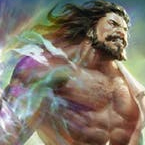
My name is Alex Truell. I'm the editor for the Rathe Times. I'm a casually competitive player living in the U.S. who was fortunate enough to come across Flesh and Blood before Crucible of War (and therefore, before the game exploded in value). I was hooked fast in no time.
Strategically, I try not to follow trends, instead fixating on cards and tactics just outside the mainstream. Now that you know a bit of my background, you can view my thoughts through the proper lens. As a player who cares about the competitive environment, but doesn't have to live in it. As an optimist who loves the game, but can take a step back to critique it. And as a deckbuilder who revels in novelty.
Thoughts and Baubles is an editorial space for the Rathe Times, where I discuss the game and respond to the community.
Crisis Averted
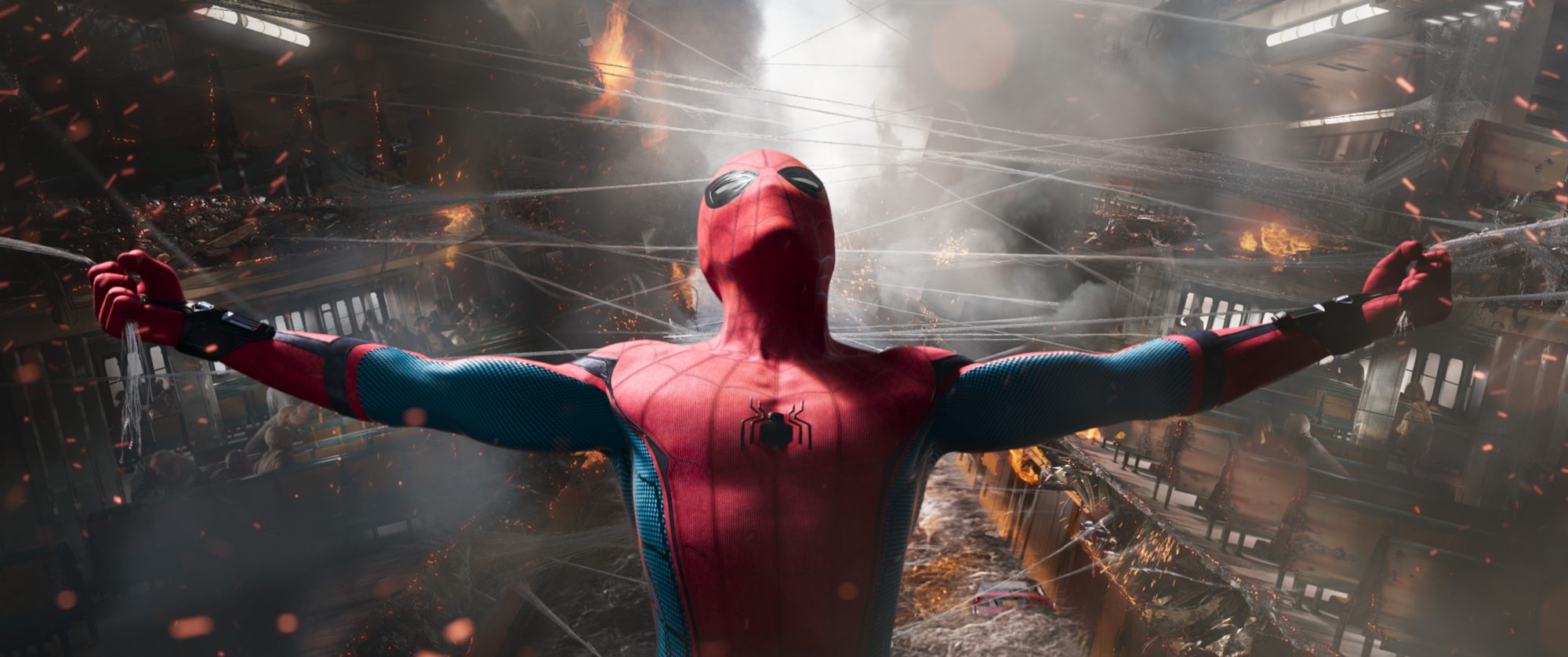
Actual footage from the Suez Canal.
The journey to Monarch's release was not an easy one. From the unexpected announcement that Crucible of War was out of print to repeated inventory issues with unlimited Welcome to Rathe and Arcane Rising, we had come to expect that Flesh and Blood was hard to come by. As 2021 dawned, FOMO ran rampant, turning the mundane practice of preorders into a feeding frenzy. Prices rose. Fingers were pointed at collectors, speculators, local game shops, and shopping bots(?) alike.
Legend Story Studios did what they could. For every printing delay, product shortage, and shipment issue that came up, they had a solution. But ultimately, the successful launch of Monarch was always going to hinge on one thing: the community.
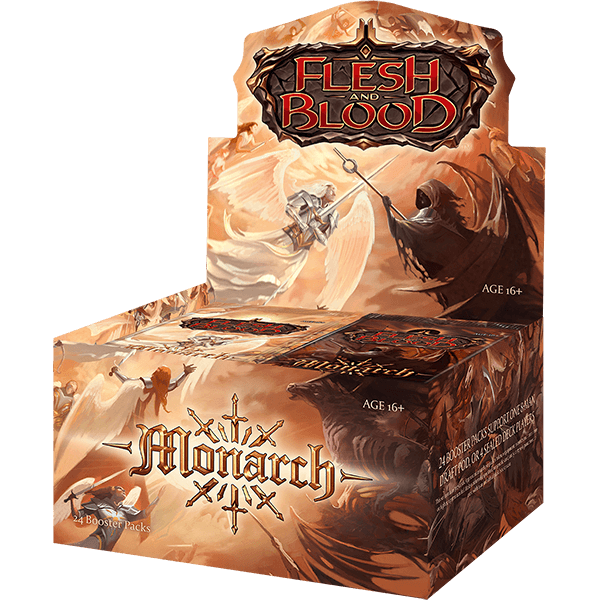
The tide began to turn with preview season. Expertly managed by LSS, the community of content creators, fans, and notable new faces delivered dynamite previews day after day over the course of 2 weeks. Paced to introduce us to mysterious new game elements before fully explaining them, these previews generated buzz and speculation like never seen before. The set told a story, and it unfolded one chapter at a time until the tapestry of light vs. shadow was unfurled.
Then there were the pre-release events, coincidentally coinciding with many in the U.S. regaining their options for in-person gaming for the first time since the pandemic began. For many, this was their first experience with Flesh and Blood as it was intended to be played- sitting across from your opponent, in your local game store, with fresh packs on hand and prize support for everyone. It was the best possible setting to showcase the new meta that Monarch was going to create.
Still, all the hype in the world couldn't have overcome a long-awaited product launching directly into the vaults of collectors and speculators. Which is not to say that outcome was entirely avoided; certainly, a vast amount of preordered 1st Edition Monarch is still unopened, tucked away for short-term flips and long-term gains.
But that hasn't been the storyline playing across the community's newsfeed.
Instead, the posts and comments from players have painted a picture of excitement and anticipation. There are photos of amazing pulls every day; people caving to the urge to open just one more box; admiration of the art- and the artists- that adorn their newest acquisitions. Deckbuilders and theorycrafters work frenetically to unlock the secrets of the new heroes, or at least to find the best use of a favorite new card.
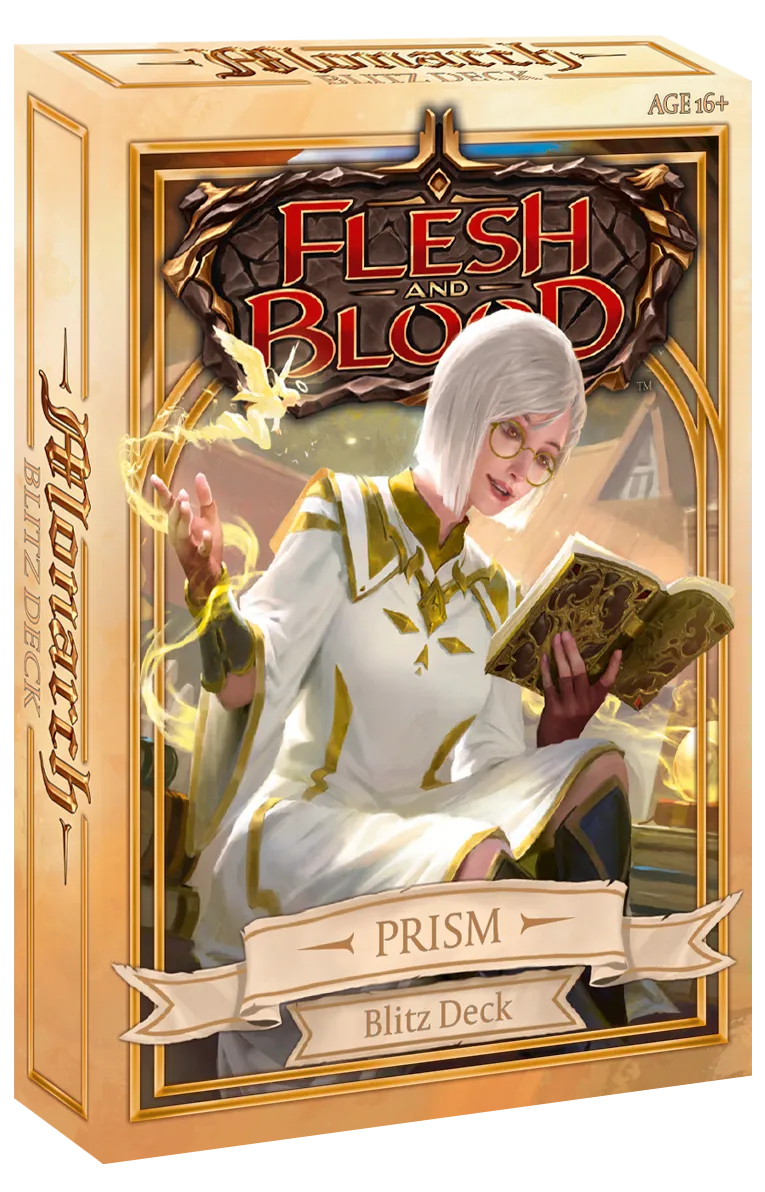
If the people waiting on Unlimited are having a bad month, they aren't dragging the community down with that. In fact, I've seen an unusual amount of buzz about Unlimited. This being the first Unlimited release we've seen for a 1st Edition set with rarity bubbles, there was plenty of excitement when photos of the new hollow rarity spots trickled in from Australia. The latest addition to the Fabled lineup and our first Landmark, the Great Library of Solana, is perhaps more beautiful in Rainbow Foil than Cold Foil.
Then there are the Blitz Decks. Releasing this week after a shipping delay, these products have started a whole new conversation around introducing new players and the differences between formats. That's not to mention the Mentor cards, an exciting and unexpected inclusion.
Many strong cases have been made against what 1st Edition and Unlimited ended up meaning for Monarch. But whether you think they should be released simultaneously, 1st Edition printed longer, or prices- and purchase quantities- strictly limited, that's all been kept respectfully in its own lane for now. The community is here for the game.
Which brings me to my final note on the matter: the market. This is the first time we've had a 1st Edition arrive with the prevailing understanding being that it's already sold out. As such, there was no early window during which the long-term value of cards was being under-assessed. Cold Foil commons never sold for $20; legendaries debuted with four digits; and the Fabled card is still coming down from an initial offering well above anything we've seen from this game.
This had the potential to completely price players out of the market from day one. Luckily, three factors- all driven by the hive mind of the FaB community- seem to have halted what could have been an apocalyptic release:
- The community quickly identified the cards with meaningful differences from Unlimited and focused their attention on those. That means anything that comes in Cold Foil, the surprise Extended Art Majestics, and foil Majestics (the least distinct 1st Edition cards deemed collectible, but notably rare to draw in the right sort of collector).
- With the exception of Cold Foil Commons/Majestics, sellers have been dropping prices on their cards rather than climbing. While there's a certain elasticity that will bring the prices back up as more inventory moves, the fact remains that we have full awareness of the long-term trajectory of FaB 1st Edition cards- and yet sellers are still willing (or perhaps forced) to follow supply-and-demand principles rather than hoard cards as collectibles.
- Finally, because the game is so good, people are trading to acquire things they need to play. And when trades aren't motivated solely by value and set completion, you find greater availability of cards at all rarities.
Because of this, Monarch is largely accessible even without sealed product on the shelves. Whether you're spending money on singles, trading new cards you don't plan to use for ones you will, or mining your pre-existing collection for value, it's entirely possible to get the Monarch experience without product on the shelves.

Actual footage of FaB fans celebrating Monarch's release. It came without packages, boxes, or bags.
Decks are Defined by Weapons, not Heroes
If there was one premise to this game that had me hooked from the sales pitch, it was outfitting your hero. My prior experience in head-to-head fighter-style TCGs was Score/Panini's DragonBall Z, but due to the nature of the source material, customization of your chosen hero was limited to character abilities and fighting styles (think 'colors' in Magic). If DBZ was Street Fighter, Flesh and Blood was pitching itself as SoulCalibur. I was there for that.
This was back when Arcane Rising was a new release, when Alpha didn't mean anything and booster boxes could be readily bought for $65 USD. And at that time, customization existed... but it was much more a token gesture. Back then, there were two reasons your hero's kit differed from anyone else's: you were on a budget, or you were actively pursuing a rogue strategy. All Guardians used the same 4 pieces of equipment- with some Nullrune on the sideboard, of course.
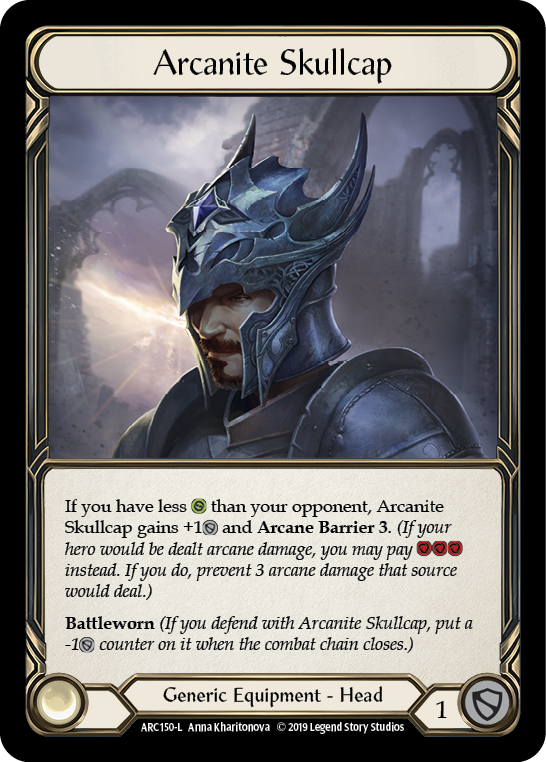

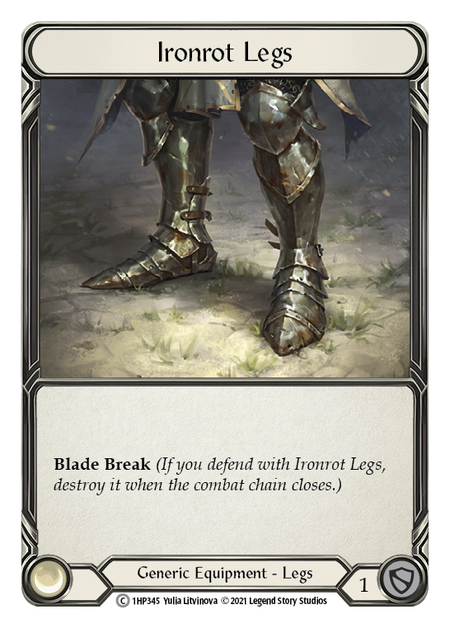

Guardians still use pretty much the same equipment- Bravo may be the most shallow hero, after all- but the situation has drastically changed for many other classes. This is especially true of the classes who were re-featured in Monarch. Even so, equipment is largely single-use; it enhances your strategies, or it improves your consistency, but it seldom shapes your build.
Weapons, however. Weapons define decks.
At this point, every class has at least 2 weapons to choose from. Dash can repeatedly fire at you with a Pistol or chain into a Shotgun blast. Katsu (and Ira, and Benji) can choose between Harmonized Kodachi, Zephyr Needle, and Edge of Autumn- right down to a Kodachi in one hand and a Needle in the other. And while not every deck is built with its weapon as a primary part of its strategy, most are.
Take Brute, for example:
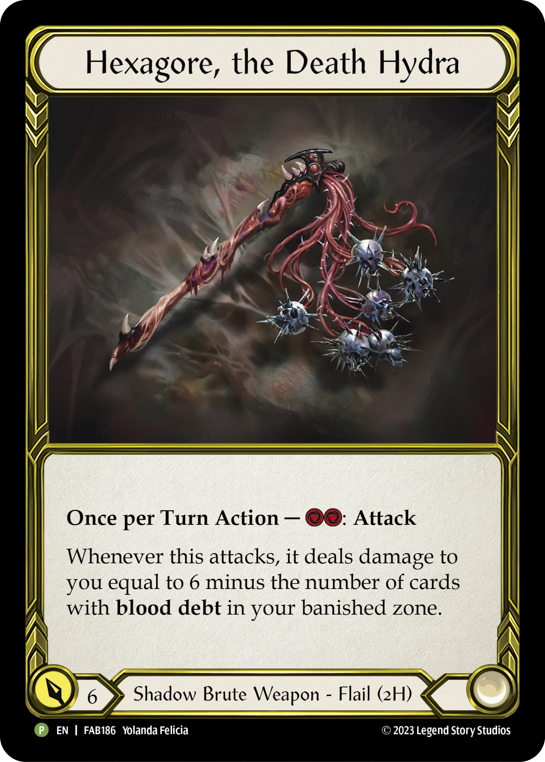

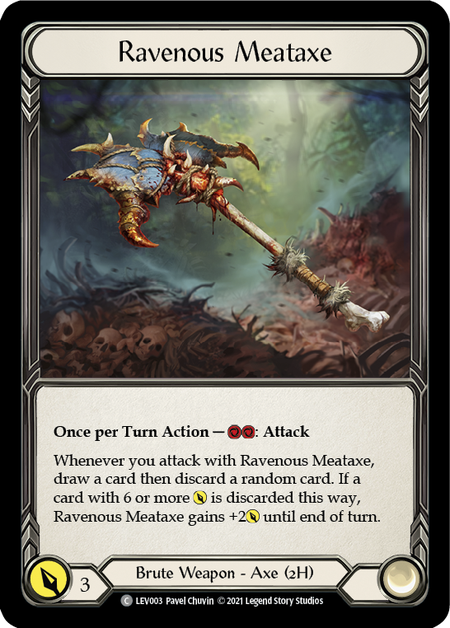
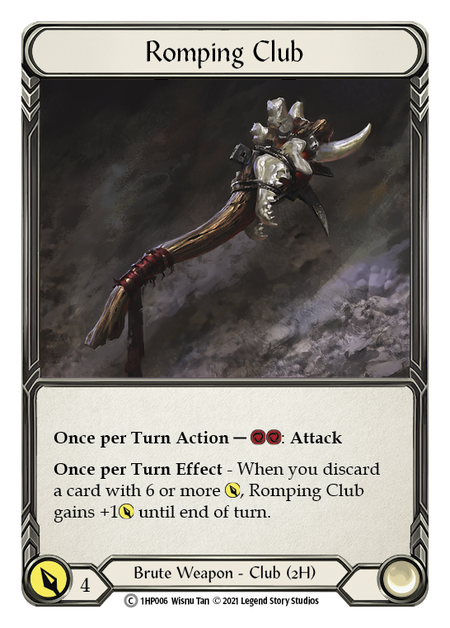
Currently Brutes can equip 4 different weapons- though 1 requires the Shadow talent as well (limiting it, at present, to Levia). And these weapons have drastically different applications. Romping Club can be the focal point of a fatigue build, dealing enough damage on its own to remain a threat while freeing up your hand for other uses; it also synergizes with Intimidate strategies due to its discard trigger and low resource cost. Mandible Claws (the only weapon a Brute can duel wield) is a deadly combo weapon, seldom utilized as anything more than an afterthought or a chip attack until the combo pieces line up and you can pump their damage for a devastating turn. Ravenous Meataxe causes a discard all on its own, but your deck needs to be built with a higher density of 6 attacks to ensure it works.
So weapons have a major influence on the deck you're building. But I didn't call them 'influential'. I called them 'defining'. So let's stress test this theory against the obvious competition: Heroes.
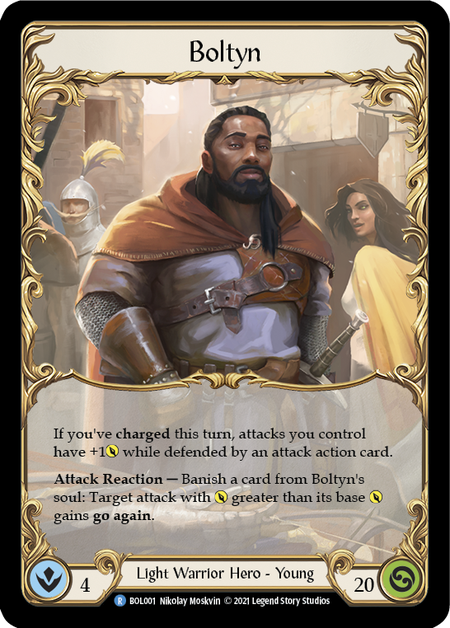
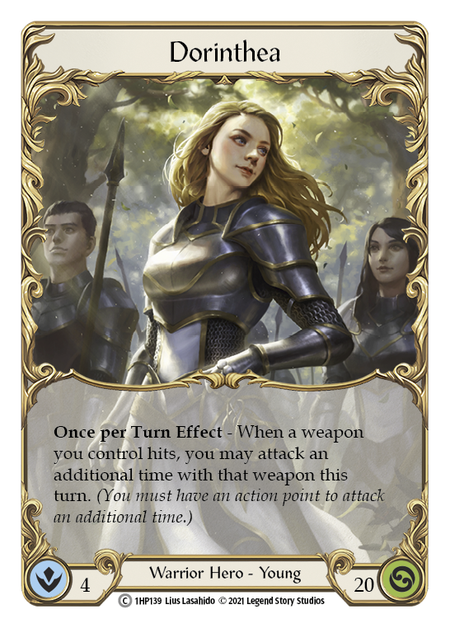
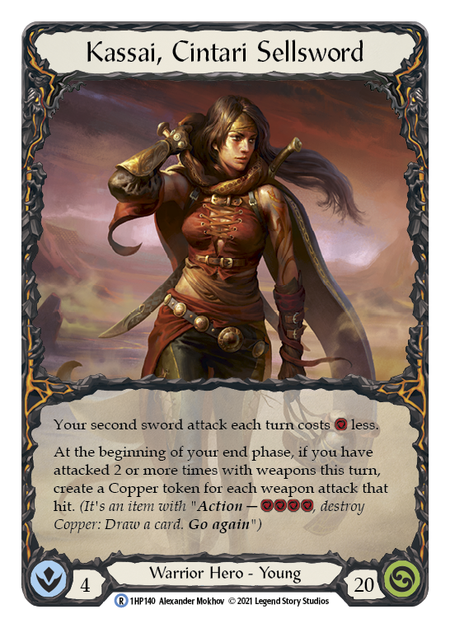
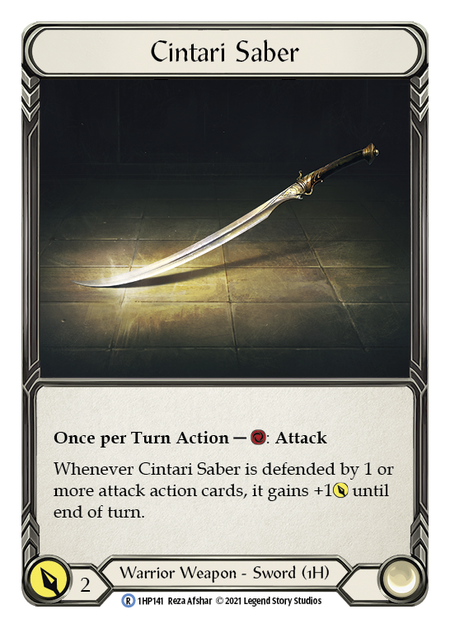
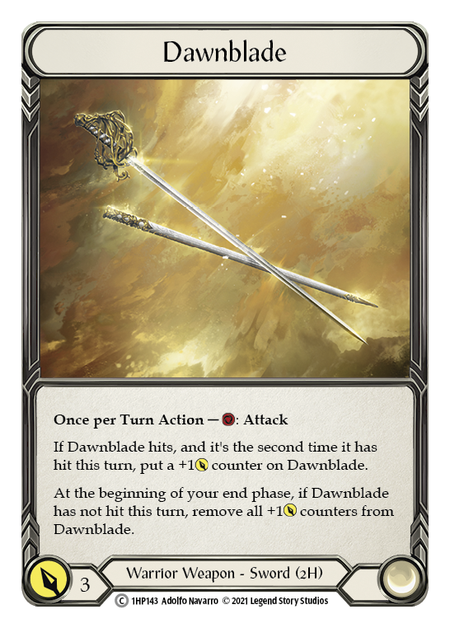
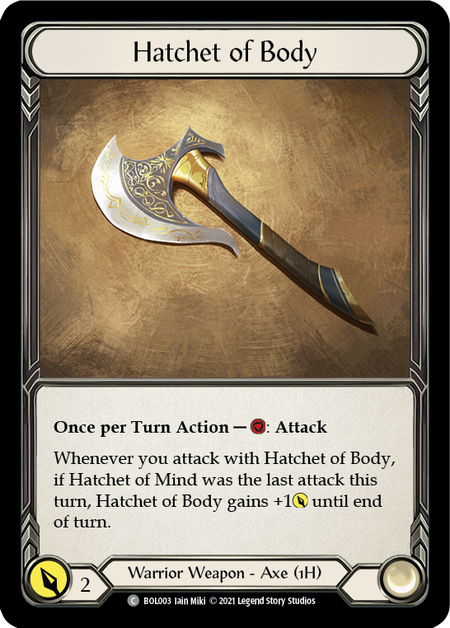
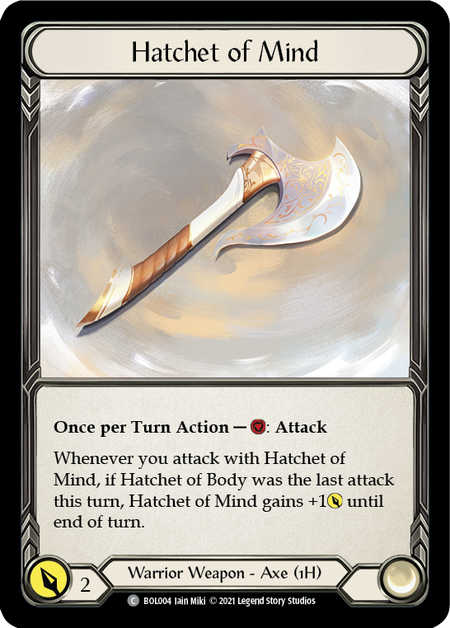
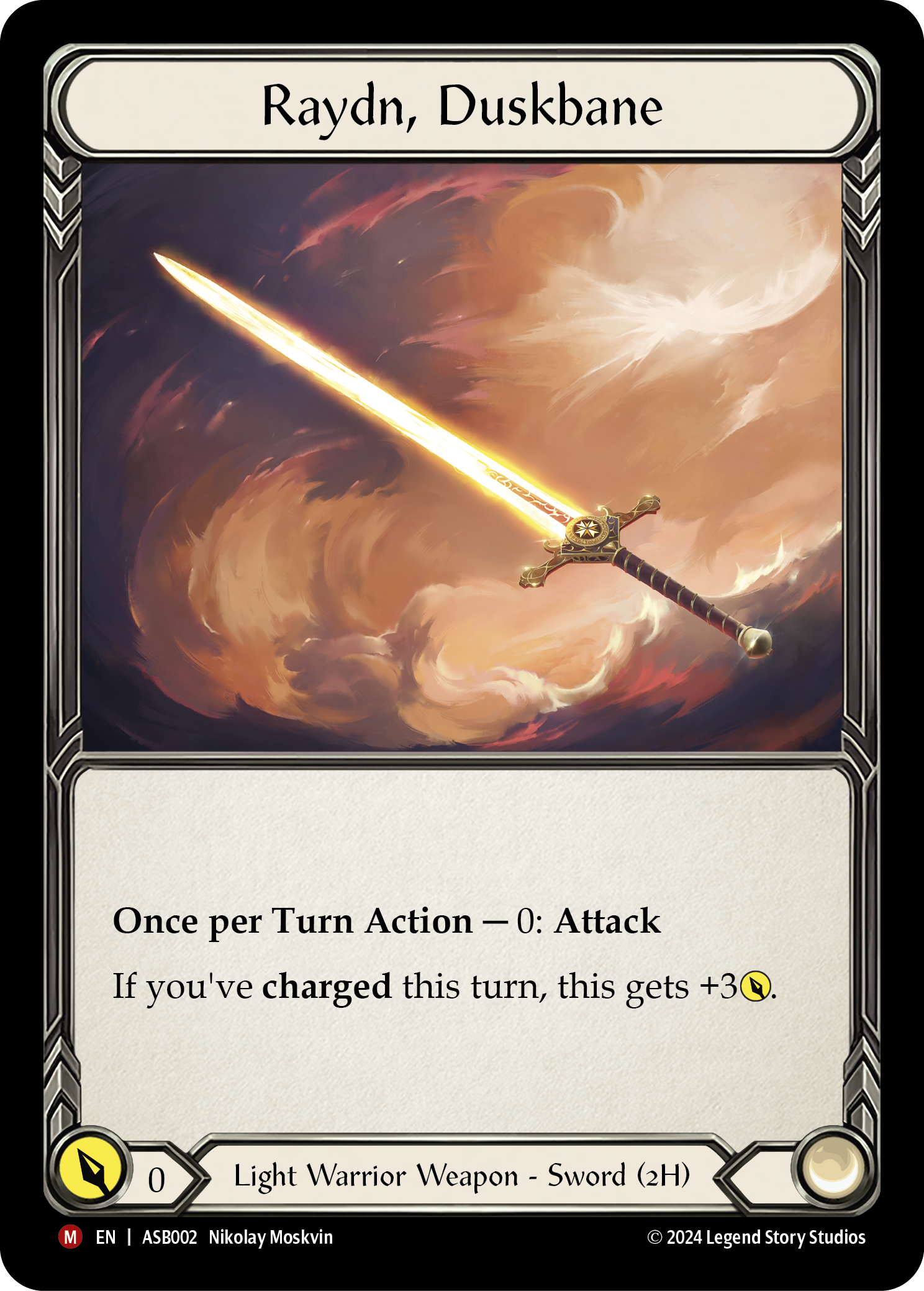
There are 3 Warrior heroes at present, and 4 different ways to equip them (I don't think anyone could make a case for equipping one hatchet and one saber). There are a few incompatibilities, however:
- Kassai is pretty much married to her Cintari Sabers due to her Hero ability.
- Dorinthea cannot use Light cards, so she's choosing between Dawnblade, Cintari Sabers, and the two Hatchets.
- Boltyn has the greatest number of choices, though Dawnblade is considered a non-starter for him at this early stage in development.
When Dorinthea is outfitted with the Dawnblade, she's focused on reactions- she needs the first attack with her weapon to hit, or she has no access to her definitive second swing. In contrast, Cintari Dorinthea is primarily concerned with Go Again, not caring if it's her 1st attack or 2nd that actually cracks the opponent's defenses. With Hatchets, Dorinthea is concerned with hitting first, but even more concerned with copious amounts of Go Again; her second- and potential third- attack get a bonus when she can alternate between left and right.
Those dynamics change drastically when you put the same weapons in the hand of Boltyn. Those same Cintari Sabers are now interested in modified damage; and a base 2 jumps straight up to 4, climbing over the top of any attack action card's defense value, thanks to Boltyn and the Sabers stacking their bonuses. The Hatchets can rely much more on having easy access to Go Again thanks to Boltyn's soul, so long as you can get Go Again -or- a modifier from somewhere else for the first attack. Then there's Raydn, which is inherently modified whenever you use it, and therefore ready for Go Again.
A Cintari Saber's use is slightly altered by which Hero is holding it. But a Hero is drastically changed by which weapon they've equipped. And the cards you choose to use due to Boltyn's abilities are pretty consistent: the same baseline of Charge effects support him in every game. On the other hand, the weapon you bring will determine the other half of the deck.
Perhaps looking at the Warrior class was a bit slanted, what with its preoccupation with its weaponry. But the difference in how a weapon is used- and how a deck is built- is even more pronounced in the Runeblade class.
Focusing solely on Viserai, we have three weapons to choose from: the Reaping Blade, the Nebula Blade, and the Dread Scythe.
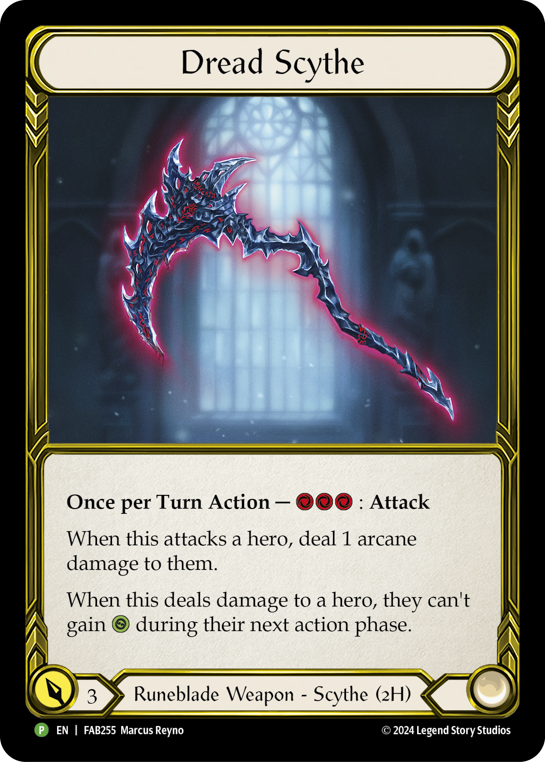

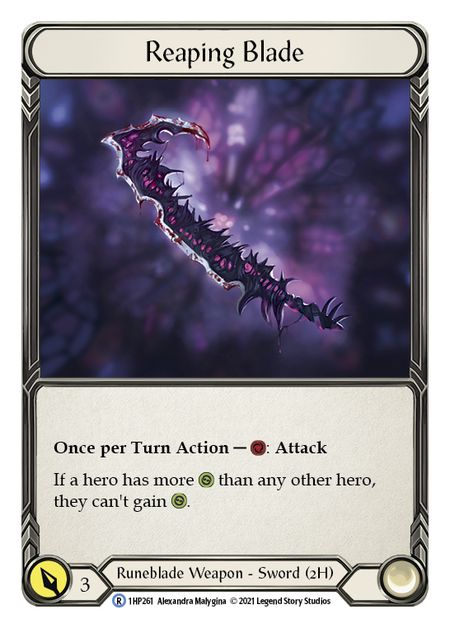
Viserai himself dictates that a Runeblade deck be built with a healthy dose of non-attack actions. But his weapons support vastly different strategies. The Reaping Blade is the cheapest to swing, and offers nothing but straight damage on the attack; however, it has a passive effect that limits healing. This weapon is frequently used in decks where the weapon isn't part of the plan at all, especially one turn kill decks that stack up Runechants. The Nebula Blade ensures you end every turn with a Runechant in play, but it relies on consistent non-attack actions to contribute in a meaningful way. And the Dread Scythe can, all on its own, deal Arcane damage, providing a source for cards that trigger off the state of 'having dealt Arcane damage this turn'; it supports a low-cost, wide-attack build that pushes damage on both fronts.
The sheer versatility that weaponry supports is even more apparent when you compare the diversity found in classes with more weapons to the homogeny found in classes with less, or where their weapons were very similar. Guardian epitomizes this, with a pair of hammers that hardly differentiate from each other. Then there's the Ranger- though Azalea players know there's much more to the choice between bows than first meets the eye! Wizard has what amounts to an unplayable 2nd weapon at present, offering no variation from the gameplay that existed before Crucible of War gave us another option.
The moral of this story is to keep your equipment stacked and face down while sideboarding is done and the decks are presented as final. Revealing your weapon early can reveal a lot more about your deck than you might think. And when you're looking for a change of pace, take a look at what weapons are available to your Hero. You may just find a fresh experience is only one forge away.



